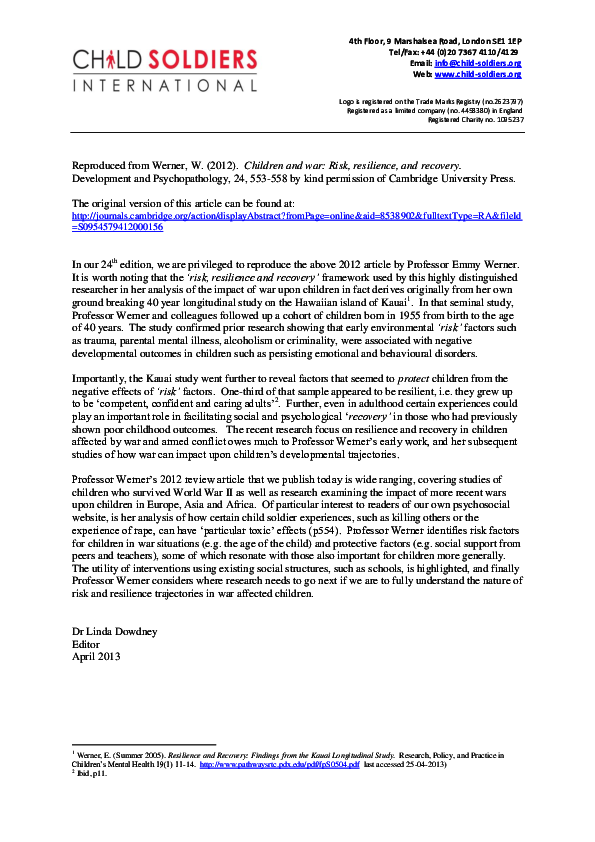
Study: Research
Children and War: Risk, resilience, and recovery
Publication year:
2012
English
Format:
(295.4 KiB)
Publisher:
Cambridge University Press
This article reviews and reflects on studies that have explored the effects of war on children around the world. Most are cross-sectional and based on self-reports. They describe a range of mental health problems related to dose effects and to the negative impact of being a victim or witness of violent acts, threats to and loss of loved ones, prolonged parental absence, and forced displacement. The more recent the exposure to war, and the older the child, the higher was the likelihood of reported post-traumatic stress disorder symptoms. Especially vulnerable to long-term emotional distress were child soldiers, children who were raped, and children who had been forcibly displaced. In adulthood, war-traumatized children displayed significantly increased risks for a wide range of medical conditions, especially cardiovascular diseases.
Among protective factors that moderated the impact of war-related adversities in children were a strong bond between the primary caregiver and the child, the social support of teachers and peers, and a shared sense of values. Among the few documented intervention studies for children of war, school-based interventions, implemented by teachers or locally trained paraprofessionals, proved to be a feasible and low-cost alternative to individual or group therapy. More longitudinal research with multiple informants is needed to document the trajectories of risk and resilience in war-affected children, to assess their long-term development and mental health, and to identify effective treatment approaches.
Read full abstract
Authors
View & Download
English
1 Documents
Document information
Publisher
Authors
Content type
Rights
© Author/Publisher
Found a mistake? Help us improve!
If you have noticed a document assigned to the wrong author or any other inaccuracies, let us know! Your feedback helps us keep our data accurate and useful for everyone.
Share
Link
